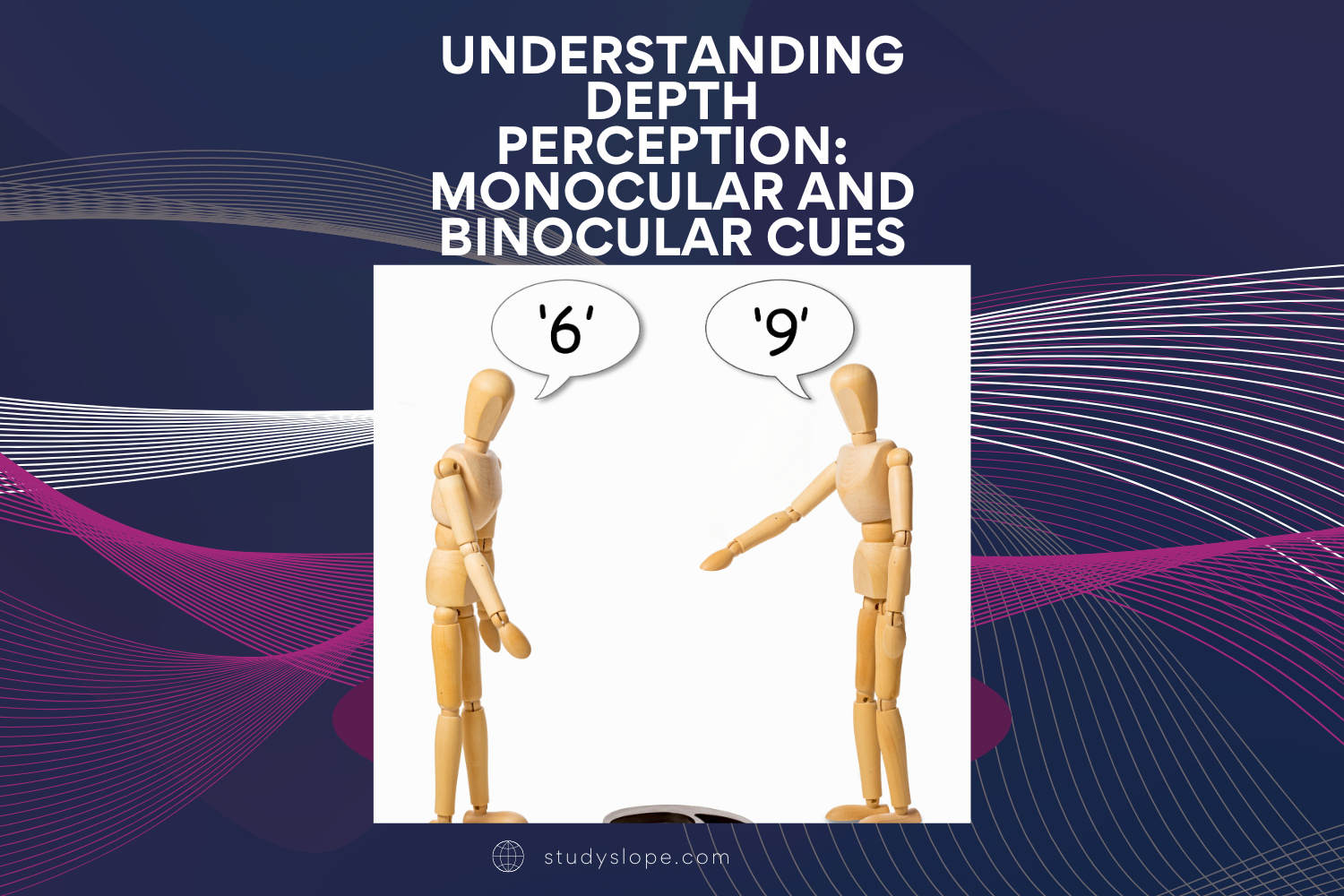Depth perception is our ability to perceive the environment in three dimensions and determine the distance between objects. it is an important feature of vision since it allows us to interact with our surroundings efficiently. Depth perception is based on a variety of cues, which can be divided into monocular and binocular cues. This article dives into these signals, notably monocular depth cues, and how they help us interpret depth and distance.
Table of Contents
What are depth cues?
Depth cues are signals that our brain utilises to determine the distance of objects from us. These cues can be classified as monocular or binocular:
Monocular Cues: These cues are available to both eyes independently. They are especially useful for distances of more than 10 meters and include a variety of visual cues such as texture gradient, aerial perspective, motion parallax, and linear perspective.
Binocular Cues: These cues demand the use of both eyes and are essential for interpreting depth at shorter distances, usually less than 10 meters. Binocular cues include binocular vision and binocular oculomotor cues, which convey information via minor changes in the images perceived by each eye.
Also View: What Happens When You Destroy Money?
Monocular Cues for Depth Perception
Monocular depth perception is based on multiple visual signals that allow humans to assess distance with just one eye. Here are some of the main monocular cues:
Texture Gradient: As an object moves away, its texture becomes finer and less distinct. For example, a cobblestone road appears harsher up close but smoother as it stretches into the distance. This gradient helps the brain determine how far away an object is.
Aerial Perspective: Light dispersion by the atmosphere causes distant objects to appear hazier and less crisp. This is especially visible in landscapes, where mountains farther away appear bluer and less detailed than those closer.
Motion Parallax: As we travel, objects at different distances appear to move at different speeds in relation to us. Objects closest to us appear to move more quickly across our field of vision than those further away. This relative motion provides information about the distances between distinct things in our environment.
Linear Perspective: In linear perspective, parallel lines appear to converge as they recede into the distance. This effect can be observed in roadways, trains, and corridors. The point at which the lines appear to converge is known as the vanishing point, and it is an important indication of depth.
Relative Size: When two things are known to have the same size, the smaller one is believed to be farther away. For example, if two cars of the same type are parked at different distances, the one further away appears smaller to the spectator.
Interposition: When one object overlaps another, the latter is thought to be closer. This is a simple method for the brain to determine the relative distances between objects.
Shading and Shadows: The way light and shadow fall on an object can reveal information about its shape and depth. Convex objects typically have shadows on the opposite side of the light source, whereas concave objects have shadows on the same side.
Monocular Depth Perception and Eye mechanics
The mechanics of the eye contribute to monocular depth perception. The ciliary muscles change the focal length of the lens to focus on objects at different distances. This changes gives depth information, particularly for distances less than 10 meters, and improves our capacity to sense depth with one eye.
The Use of Binocular Cues
While monocular cues are important, binocular cues provide more detailed information by using both eyes. Because of the distance between our eyes, binocular vision allows us to see somewhat varied perspectives on the same thing. The brain combines various perspectives into a single vision, a process known as stereopsis, which gives us a sense of depth. Binocular oculomotor cues, which entail the eye muscles converging when we focus on close objects, also help us perceive depth.
Remove Depth Cues
If depth cues are absent, our capacity to perceive depth is severely reduced. This can be seen in virtual reality environments, where the lack of real-world depth cues makes evaluating distances challenging. Similarly, people with vision with just one eye rely primarily on monocular cues and may find certain tasks more difficult without binocular depth information.
Applications of Depth Perception
Understanding depth perception has practical benefits in many industries.
Arts and Photography: Artists and photographers employ methods such as linear perspective and shading to create depth in their work.
Virtual Reality and Gaming: Developers use both monocular and binocular cues to increase the realism of virtual surroundings.
Robotics and Autonomous Vehicles: Depth perception is critical for navigation and object interaction, directing robots and vehicles as they interpret and navigate through their surroundings.
Conclusion
Depth perception is a sophisticated process that uses both monocular and binocular inputs. Each sort of cue gives useful information that our brains use to analyze the three-dimensional world. Whether it’s the minute details of a texture gradient or the subtle changes detected by binocular vision, our experience of depth is a stunning combination of visual signals. Understanding these cues not only broadens our respect for human vision, but also drives technological and artistic breakthroughs.
Understanding how these cues interact allows us to gain a deeper understanding of our vision and apply that information to improve visual experiences in everyday life and technological applications.

